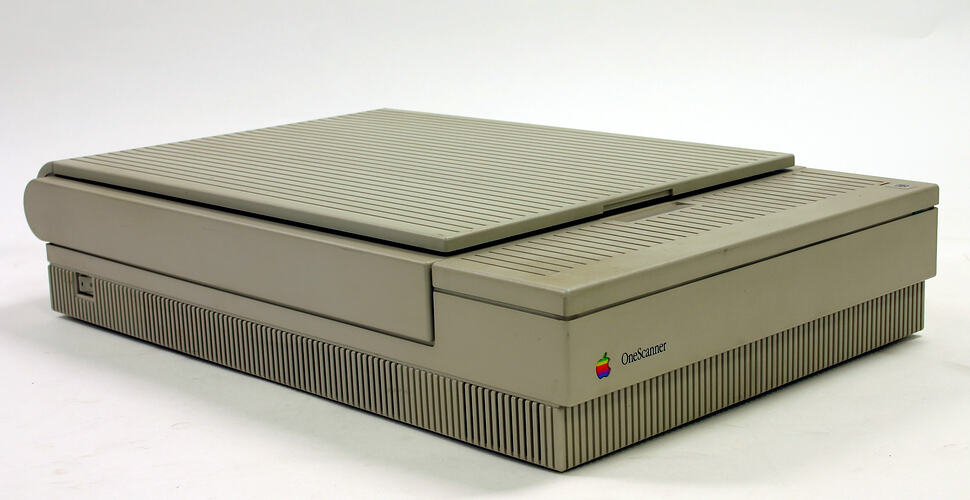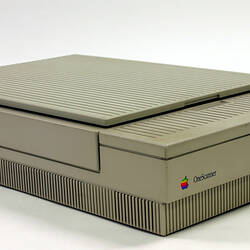In the early 1990s, the donor ran his own manufacturing business and produced illustrated instruction manuals for the products he was manufacturing.
The donor was an engineer who had produced these manuals for many years by typing, photocopying, and tedious and irreversible 'real' cut and paste. That all changed with the purchase of a Macintosh, which the donor says allowed him to try things out and to experiment. He says that by electronically capturing images, something that was then quite revolutionary, he had the freedom to 'see' ideas on the screen, with no costly wasted paper or ink or messy hands.
To assist in the creation of images for the illustrated manuals, the donor purchased an Apple Scanner, the first scanner marketed by Apple, and the model that preceded the Apple OneScanner he has donated. It offered black and white scanning up to a resolution of 300 dpi, limited grey scale scanning with 16 shades of grey and via a clever 'dithering' scheme it also offered the illusion of producing reasonably effective photograph quality scans, which the donor says printed surprisingly well. Much of this cleverness was a result of the accompanying software - an excellent program called AppleScan. The donor used the scanner for digitising technical drawings, then embellishing them in another program called FreeHand, for later placement into his new instruction manuals.
Another benefit of scanning black and white hand drawn line drawings was that adjustments could be made to lighten or darken the final result by thinning out overly-heavy hand drawn lines or thickening faint ones. Unwanted blemishes such as smudges and paper creases could be erased with great ease. Hand-written text and notes could be erased and replaced with typeset quality notations. The donor says: 'This was the sort of work traditional printers would do for me, but now I could do it all myself, and be as fussy as I pleased! It gave me full control'.
More Information
-
Keywords
-
Authors
-
Article types

